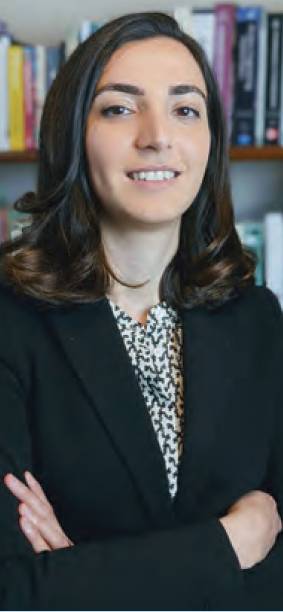Name: Dr Bahareh Zaghari MRAeS, 36
 Location: Cranfield University, UK.
Location: Cranfield University, UK.
Job title: Lecturer in Propulsion Integration.
What inspired you into aviation? As a young child, I was interested in stargazing – what lay beyond our own world? At night, we see the Milky Way from the inside and, every time you look, you can find something new, something you didn’t know before. I have always been very bookish, and stargazing supplemented that thirst for knowledge. I started building my own rudimentary telescopes and worked with NGOs to organise stargazing trips and building aircraft models for schools. I eventually gained an interest in electronics because of more hands-on experiences and used my new interest to make ‘smart’ telescopes.
This interest would later bloom into degrees in electronical and mechanical engineering, a path I would follow for over a decade. However, the allure of aerospace study would return. Equipped with a grounding in smart systems and sensing, I challenged myself to apply those techniques to various aspects of the aerospace industry.
What is the best thing about your current role? I work with a multidisciplinary team and I learn from them. I research electric power management and distribution in electrified aircraft to reduce emission, build and design smart temperature sensing for high-temperature applications using acoustics. This means I am innovating, and I can be hands on in our experimental studies. To do this research I collaborate with inspiring researchers and enthusiastic students at Cranfield University.
The process of writing grant applications allows me to constantly think about the impact of my work and I enjoy the feeling of contributing to society with what I love the most, doing science! I realised I did not manage to say one thing about my current role and that is good because I like the variety of activities, so I am never bored.
What made you join the Royal Aeronautical Society? While I have a solid grounding in electronic engineering, I do not have a degree in aerospace engineering. The Royal Aeronautical Society provides me with a meaningful and inspiring context on which I can apply my electrified systems experience. More importantly, it helps me to get to know people working in aerospace, and to better understand the challenges that face our industry.
What do you hope to get out of your membership with the RAeS? The primary appeal of the RAeS, for me, is to be able to discuss sustainable aviation and aircraft electrification with aerospace engineers. The RAeS runs events that are great for these discussions, and for the networking opportunities they provide. I can, in turn, offer my expertise in nonlinear dynamics, energy harvesting, electrical machines and smart-systems-design experience.
What three items would you take with you to the space station? I am a voracious reader, so a good stack of books would certainly be welcome. A yoga mat would also help me to maintain my grounding in space and I wouldn’t say no to a healthy stock of chocolates and ice cream!
What’s your favourite aircraft? My favourite aircraft is the Wright Flyer. It certainly had a lofty goal and a troubled development history, and people widely dismissed the Wright brothers’ success (at least initially). Despite this rocky start, the Wrights paved the way for the aerospace industry.
Who is your biggest inspiration? James Clerk Maxwell, whose theory unified electricity and magnetism. Again, despite his groundbreaking findings, he had trouble finding a job – an interesting reflection on our modern society. Maxwell demonstrates that, no matter who you are, one needs persistence and the ability to power through tough situations to thrive.